CAUTION: This article, and the photos in it, include graphic details about pig slaughter. If you are disturbed by information and images of this nature, please use your own discretion when determining whether to read further.
If you know a good butcher and can get your hands on some uncured pork belly, you can make bacon at home. Or you can get some pigs, raise them to market size, and process them.
In case you want to go the latter route, check out these other articles on hog processing in this series.
Article #1: “Preparing for a Pig Slaughter”
Article #2: “The Pig Slaughter”
Article #3: “Hog Processing: Skinning, Scalding, Scraping, and Eviscerating”
Article #4: “From Bacon to Baby Backs: Hog Butchering at Home”
Either way, let’s get down to the business of making bacon.
Begin With the Belly
I have a confession to make. I was in my 30’s before I realized that bacon was made from the belly of a pig.
I knew it was pork. And I knew it was delicious! I just never considered how it was made. So, in case you are in the same camp, below is a photo of where bacon starts.
This is what the belly looks like when it is removed from the pig. As you can see, it doesn’t exactly resemble those perfectly rectangular slices of meat you get at the grocery store.
That grocery store bacon is pressed into shape prior to slicing. Unless you have a pork press designed for squishing bellies into perfect rectangles at home, your finished bacon will probably look more like those in the photo below.
You can also make bacon from the jowls, back, and loin area of the pig (usually called Canadian Bacon). However, the belly is what we are most accustomed to eating in the U.S.
If you do process your own pig, definitely cure the jowls, too! Jowl bacon melts in your mouth and tastes even better than belly bacon because the meat is so tender and rich.
With that anatomy lesson over, on to the very complicated steps of making bacon.
Don’t worry! I’m joking!
Making bacon is less difficult than making an omelette. It just takes a little longer.
Step #1: Make the Cure
There is no bacon without cure. Otherwise it’s just belly.
The cure usually consists of salt, sugar, spices, and the scary pink Instacure #1 (also called “pink salt” by some). Instacure is the sodium nitrite source most commonly used to preserve bacon to minimize the risk of botulism.
Some people also try to cure bacon with alternative natural nitrite sources like giant quantities of celery powder. Others just skip the Instacure and go heavy on the salt.
My Favorite Bacon Cure Recipe
Personally, I use the bacon recipe in Meredith Leigh’s awesome book The Ethical Meat Handbook. Her cure recipe is so simple, I have it memorized.
Here’s the recipe:
- 5 pounds pork belly (with the skin on)
- 3.5 ounces kosher salt
- 1.75 ounces brown sugar
- 0.2 ounces Instacure #1
- 3-4 cloves garlic, grated on a microplane grater
I use my garlic press instead of grating my garlic (less risky for my fingertips). I also use 5 cloves, so that I have one for each pound of meat. I love garlic!
Working With Larger Quantities of Belly
When you are working with bellies from your own pigs, you may need to adjust the recipe based on your actual belly weight. For example, we had 24 1/2 pounds of belly to cure in our last round.
I converted the recipe into 1 pound increments, then multiplied those by my actual number of pounds. For example, 24.5 pounds of belly x 0.7 ounces salt = 17.15 ounces of salt.
Here’s the same basic recipe in 1 pound increments:
- 1 pound pork belly (with the skin on)
- 0.7 ounces kosher salt
- 0.35 ounces brown sugar
- .04 ounces Instacure #1
- 1 clove garlic, grated or pressed
The Great Nitrite Debate
I’ve met a number of people who draw back in horror when I admit to using nitrites in my home-cured bacon. They can’t believe that a health-conscious home-food grower would dare apply the dreaded pink salt (my brand shown above) to bacon.
But, here’s my take.
I have just as many environmental and health concerns about the salt and brown sugar in bacon as I do about the nitrites. Salt is a mined substance. Or, it comes from sea water.
With just a few exceptions, sea salt tends to have trace amounts of dissolved plastic in it. Mined salt, of course, uses enormous fossil fuel resources. This leads to climate change, which in turn leads to thousands of potential health-impacting consequences.
Salt also, often, has thousands of food miles in it. That brings us back to the climate-change concern.
Don’t even get me started on sugar and all the harm in that industry!
Basically, since I am already using salt and brown sugar, adding Instacture doesn’t even rate on my morality meter.
We also cold-smoke our bacon. Smoked foods are known carcinogens. So, I suppose I am pretty cavalier on the health-risk front, too.
Bacon is a luxury in my world. From a 250 pound pig, raised for 6 months, we get about 20 pounds of sliced bacon and some bacon bits. This constitutes our annual supply of bacon. Bacon doesn’t make up a large portion of our diet.
Truthfully, I worry more about the potentially lethal consequences of botulism than I do about the longterm cumulative effects of eating trace amounts of nitrites.
The great thing about making bacon at home, though, is that you get to decide what recipe to use. I love Meredith’s recipe. However, there are tons of nitrite-free variations available online. (You should be aware, though, that sometimes nitrite- and nitrate-free variations actually end up having more nitrites and nitrates than conventional brands when cooked!)
Now on to the important task of giving your bacon a belly massage.
Step #2: Massage the Cure Into Your Bacon
I like to cut my belly into manageable hunks of meat that will fit inside my large stainless-steel mixing bowl. Then I pour the cure over the meat and and rub it in by hand. The cure and the bacon end up melding together as one wet, soppy mess.
If you have any cuts on your hands, wear gloves for this step. You know what they say about salt on open wounds . . . OUCH!
Step #3: Flip Your Bacon Once a Day for 14 Days
It takes time for the bacon cure to penetrate the meat and do its magic. You want to flip the bacon over once each day to keep the cure moving through the meat. This also forces you to look at your meat and make sure it’s not rotting or being eaten by insects. (Hasn’t happened to me, but better to be safe than sorry!)
If you are making bacon in cooler weather, you can keep your bacon in an unheated outbuilding. You might want to put it in a bucket with a tight-fitting lid to keep out pests.
In warmer weather, consider curing your bacon in the fridge or in a cooler.
We usually process a couple of pigs at a time (for us and extended family). Sometimes, I use a marine cooler with frozen bottles of water (changed every 2 days) as my bacon fridge.
Or, I take up an entire shelf of my fridge if I have the room.
Because we cure large quanities, I put our bacon in plastic bags to cure. Leave lots of air in the bag because the meat needs to breath during this process.
I write on one side of the bag. Then I start curing with all my bags writing-side-up. I flip them on day 2 so the writing side is down. Then I repeat, until I’ve done this for 14 days.
Warning! If friends help you cure bacon, there’s a good chance you might end up with funny things written on your bacon bags. Those bags may also be covered in drool because the thought of bacon tends to make people salivate.
Step #4: Rinse Your Bacon
After 14 days of flipping, your bacon is cured. Rinse off the extra cure and pat your bacon dry.
Step #5 (Optional): Smoke Your Bacon
If you plan to cold-smoke your bacon to make it extra yummy . . . Now is the time!
Stick those slabs of meat in your smoker and fill them with all those carcenogenic chemicals for about 4-6 hours. Use woods like apple, oak, maple, and hickory to impart your favorite smoke flavors.
Step #6: Make Your Bacon Pan-Ready
If you cured your bacon with the skin on, cut off the skin and trim off the extra fat.
Put your bacon in the freezer to firm it up. This will make it easier to slice. (Don’t let it become an ice block. Just freeze it the point when the fat doesn’t slime your hands when you start cutting.)
You can hand-cut your bacon or run it through the slicer. On the slicer, we find that setting 1, or even a hair less than that, works well for thick, but not chewy, slices.
When using a knife, keep your sharpener handy. All that fat dulls the blade pretty quickly. And slicing bacon by hand with a dull knife is a horror movie waiting to happen.
Extra Bits
I always cure my bacon with a lot of extra fat still on it. I also throw extra bits of skin in the cure to use for stock.
Bacon-Flavored Lard Recipe
I render that extra fat into lard, which tastes a whole lot like bacon grease (without the crispy particulate matter).
Here’s how I render small quantities of lard:
- Throw 1 inch cubes of pork fat in the slow cooker.
- Cover those cubes with a half cup of water.
- Turn the slow cooker on low.
- Stir as needed to keep the lard cubes from sticking until the fat starts to render.
- Once the fat starts to render, stir just enough to keep the brown crispy cracklings from sticking to the crock.
- When the fat is transformed into buttery liquid and the solids look like fried chicken, strain the liquid into jars and cool.
- Throw that fried chicken looking stuff into your cornbread and eat like a pioneer might have.
Bacon-Flavored Skin Stock Recipe
I use the cured, smoked skin and any other extra bits to make stock. Unlike bone stock, this stuff is not intended to promote good health. This stuff is used to create decadent seasoning that imparts smokiness, saltiness, and sweetness to any savory dish.
Here’s how I make it:
- Cover the pork skin with a few inches of water.
- Boil it on high.
- Stir frequently to keep the skin from sticking to the pot.
- Add water to the pot, as necessary, to keep the skin covered.
- When the skin is almost dissolved in the boiling water, and falls apart when you stir it with a spoon, stop adding water.
- Boil a bit more until you have only about a quart of water in the pot.
- Strain out the solids and allow the liquid to cool.
- Freeze the stock in ice cube trays, then add 1-2 to stews or to thicken sauces. This will add gelatin; fat; and smokey, salty goodness to your meals.
Eating Raw Bacon
Going back to the nitrite debate, cooking bacon is actually what makes the nitrites used for curing turn into the bad stuff. So, if you really are worried about nitrites, skip the lard and skin rendering, since those processes involve lots of heating of the nitrites.
Also, consider air-drying your nitrite-cured bacon to make it like beef jerky. Then you can eat it raw rather than cooking it.
You can also just eat your bacon raw. When you eat bacon raw, it’s basically pancetta. You can slice it thin like prosciutto or cube it and use it in pancetta recipes.
Storing Your Bacon
After curing, your bacon is shelf-stable. So you can store it in a pest-proof cellar or other moderately cool environment.
Personally, we freeze ours in 1 pound increments so we can use it over the course of a year.
We Want to Hear From You!
Do you feel passionately (love or hate) about bacon? We’d love to hear how you make bacon, plus your thoughts about nitrites and more. Use the comments section below to share your thoughts and ideas with our TGN Community!
__________________________
This article was originally published on July 13, 2018. The author may not currently be available to respond to comments, however we encourage our Community members to chime in to share their experiences and answer questions!
The Grow Network is a participant in the Amazon Services LLC Associates Program, an affiliate program designed to provide a means for our team to earn fees for recommending our favorite products! We may earn a small commission, at no additional cost to you, should you purchase an item after clicking one of our links. Thanks for supporting TGN!

Tasha Greer is a regular contributor to The Grow Network and has cowritten several e-books with Marjory Wildcraft. The author of “Grow Your Own Spices” (December 2020), she also blogs for MorningChores.com and Mother Earth News. For more tips on homesteading and herb and spice gardening, follow Tasha at Simplestead.com.
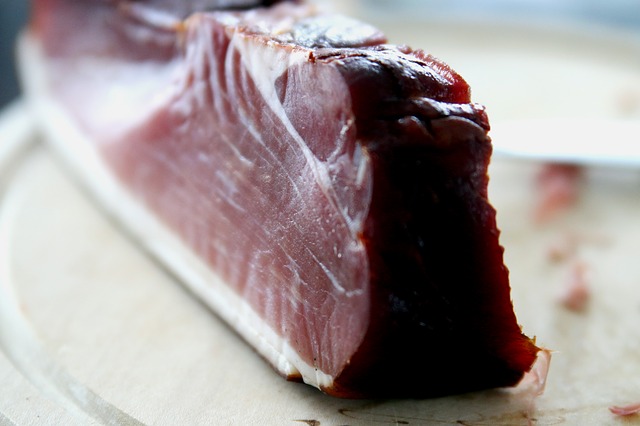
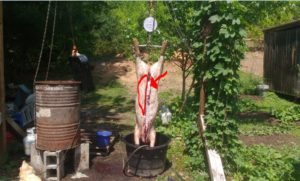
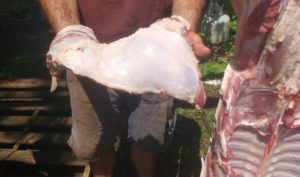
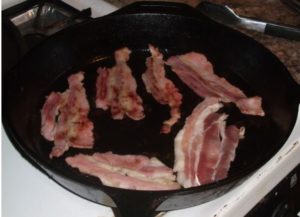
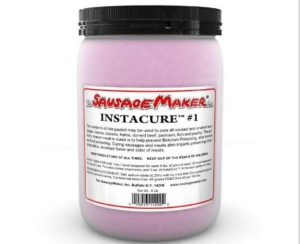
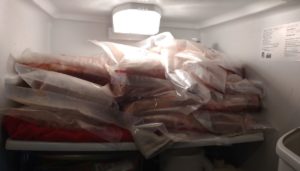
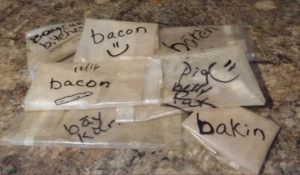








COMMENTS(18)
When you stated that the cured bacon can be eaten raw, you didn’t address the issue of trichinosis. I’m absolutely positive that I wouldn’t want to risk getting parasites even though I love bacon. I wouldn’t eat raw beef either unless I was certain that the animal was bred in a certified brucellosis free herd
Hey JL Emerson – Thank you so much for bringing this up. You are correct, there are absolutely increased risks of Trichinosis in eating raw or cured meats.
Here’s a link to the CDC guidelines on prevention – https://www.cdc.gov/parasites/trichinellosis/gen_info/faqs.html.
I had mentioned in an earlier post in this series that the only reason pork is considered one of the safer meats to eat is because is thoroughly cooked and very often frozen. These two practices increase the safety of the meat exponentially.
You are totally right, eating raw meat is much riskier than eating cooked meat, so thank you for raising the issue!
Tasha
I’m not trying to personally attack you Tasha but you are dead wrong about nitrates/nitrites. Heat has absolutely nothing to do with it, FYI. Nitrates/nitrites have a MSDS where salt and sugar do not. You don’t have to be a brain surgeon to be able to figure out that this alone is a huge red flag. Nitrates/nitrites are the number one poison for wild pigs and it works on humans the exact same way (pig organs have been used by doctors to save human lives, heart transplants, arteries, veins, etc… think about that). Feed that has been treated with nitrates are left out for wild pigs, they eat the food, and they quickly develop methemoglobinemia (thier blood stops carrying oxygen, hypoxia sets in and they suffocate and die). According to the MSDS on your harmless pink salt, you eat some of it and you will experience the same fate. Most people can pass the nitrates out of thier systems, some with health problems cannot, regardless of which you are, most can experience better health and well being, fewer headaches, more energy, etc. By simply not eating meats poisoned.. er… I mean “treated” with nitrates/nitrites. Here you are actually promoting this horrible/toxic substance when we really don’t need it (there are other ways that are safe and effective). And another tidbit that will help curb some ignorance is this, the naturally occurring nitrates in celery are very different from the chemically synthesised/refined nitrates in your pink salt. I love being frugal just as much as the next person, and that alone makes your toxic/poisonous pink salt fairly attractive, but it is far beyond unacceptable because of what it is. And the excuse that billions have eaten it and they are just fine is total hog wash (pun intended). By that logic forget organic, smoke 5 packs of cigarettes a day and drink yourself into a permanent drunken stupor… using pink salt is no less intelligent and ignorantly promoting it is so very wrong and has no place on a site like this. Just because you failed to do your due diligence doesn’t excuse you from trying to con others into the same failed thinking. I appreciate you sharing some of your experiences with processing pigs, but when you don the hat of educator, you have to wash off the ignorance first. I’m sorry this places you in the crosshairs, but that is the nature of stepping up to teach others. I hope this will spur you into taking a real look into this topic, gain some knowledge, and improve your life (and influence on others). And for the record, thank you for sharing, I like and appreciate everything else you have shared.
Hi Cre8tiv369, can you please provide some links to your comment about natural nitrates from celery etc being very different from chemically refined nitrates, and what you mean by”there are other ways that are safe and effective” (other than celery salt or green bacon that’s not cured)?
Your comment about feral pig baiting with super-concentrated loads of nitrate (1000xs time the dose in bacon) is pretty irrelevant in my opinion (notwithstanding the health impacts of nitrates etc which the author notes)…even parsley is toxic at a sufficient dose.
Ah… you are a doser Nick… One of those anything is toxic or poison in a high enough dose retentive types. New studies (actual peer reviewed legitimate studies) are finding that for many toxins/poisons, sometimes trace amounts are actually very bad for us and cause all sorts of chaos and problems, and we are talking at trace, non poisonous, fairy dust and gas fumes, tiny pesticide residue type doses. If a substance is toxic or poisonous or causes bad things at low doses then it is relevant to most people with a brain. Are headaches relevant to you Nick? How about just your overall feeling of well being? Do you find off days, lack of energy, low O2 blood saturation to be relevant? Most dosers don’t bother to think about those things but then again, I find most dosers don’t bother to think at all, they have a cynical scapegoat that allows them to blow off potentially valuable info and do obnoxious things like ask for a link. Sorry if you sprained your best Google pinky finger but I didn’t bother to write my previous post with a glossary, appendix, footnotes, etc. for a reason Nick. You gotta go do your own research (I recall a line about hoping to spur the author into taking a closer look at this topic). Hell Nick, even Target and Walmart are selling uncured meats. Did you ever bother to wonder why? Enough people have figured it out to create a mass market for nitrate free meats. There are also a ton of articles about the naturally occurring nitrates in cellery and about how it differs and how our bodies process it and don’t see it as the “toxic, chemical, bad for you” version. I’m also not going to give you a 3 hour lecture on the history of preserved/cured meats (heck, even Modern Marvels made a one hour show on cured meats that barely made a dent in the subject). I’m not in the business and I don’t have a stake in nitrate free foods, so don’t ask me to convince you or do your work for you. Research it however much you like, or don’t bother. But if you start teaching and promoting a bad substance, then you can bet folks with a brain are gonna bust yer balls about it, regardless of the stupid dose.
Hey cre8tiv369,
Me again! I keep livestock and I can tell you that in order to keep your livestock alive, you have to be a doser!
For example, goats need trace amounts of selenium to make healthy babies. Insufficient amounts result in babies with White Muscle disease that often ends in the babies dying. However, too much selenium can result in death for your pregnant goats. It’s always a balancing act that depends on correct dosing of a naturally occurring, mineral.
If I fed a cow the same dose of selenium as we give to goats, they’d also likely end up dead. I am going to have to say, I am with Nick on this one. Dosages matter in almost everything. Being a doser is not a negative in my opinion.
As I said in the last post, I am totally OK with you “busting my balls”. You’re right, I put myself in the crosshairs by writing this post. But I think Nick was just asking you to save him from having to wade through hundreds of articles by giving him a link to a reputable source on celery nitrites being different that synthetic nitrites.
Sharing links to research-based articles is one of the ways we can help each other make informed decisions and save each other time. It’s one of the big benefits of a community like this.
Thanks again for sharing, but it would be really helpful if you could point us to the research you rely on.
Tasha
I grew up raising organic goats, started with Nubians and then switched to Saanens (since the early 70’s). And have had multiple vets over the decades and have never, not even once, had to give a goat selenium (thousands of kids born over that time). I have never had to do any supplementation with a very long list of farm livestock. I understand that perhaps in your neck of the woods you have to supplement your livestock, but that does not make you a doser. A doser is a fool that argues against anything and everything toxic or poison because they cling to an idea that everything is toxic in a high enough dose. It’s an excuse to justify industries that poison and pollute for profit. It’s a flawed way of thinking that tosses common sense out the window. Balancing livestock supplements to compensate for a poor environment does not make you a doser.
I was raised to view everything I read or hear as biased. Simply because it is. A link is worthless to me, I always try to find as much info on a subject both pro and con and try to read between the lines objectively. I’ve done my research on nitrates/nitrites and again, I am not in the industry, I’ve said my piece and even dismissed a doser troll. Education is a personal responsibility, and those that own thier lives don’t need nor want a link. The fact that everything I said is backed by a fast growing mass market for nitrate/nitrite free meats is more than enough to spur any intelligent person to take a deeper look. And free range pork is very healthy just like grass fed beef is healthy. How our livestock are raised, how and what they eat, access to clean water, it all matters and can make an extremely unhealthy meat or a very healthy meat out of the same animals. It’s the farmer/steward that makes the main difference. The person processing that meat is the next link in that chain and we are discussing some of how and when that could go south.
By the way, only refined vinegar has a MSDS, you won’t find them for cooking vinegars, and fermented cooking vinegars are very good, as are most naturally fermented foods. If it came from a chemical processor, it has a MSDS and should be avoided for anything we might put in our mouth. But that is just my 2 cents and the voice of reason, you get to choose whether or not to listen.
Hey cre8tiv 369,
I am totally with you on the livestock stewarding front. We depend on these animals for our quality of life, the least we can do is take good care of them in return.
I think Nick has now affirmatively cleared up the notion that he’s a doser troll. I think he’s a genuine bacon aficionado, interested in new recipes and ideas. So hopefully we can put that one to rest.
Thanks again for sounding in. I really do appreciate your passion. It is so important that we all think about where our food comes from and what goes into its production.
Tasha
Hey cre8tiv369 – Thank you so much for not attacking me! That wouldn’t have been nearly as useful as having a great nitrate debate with someone who clearly is very passionate about this issue.
For the record, I was trying to say that synthetic nitrites are nasty little things, same as dissolved plastic in sea salt, food miles in regular salt, and sugar (in more ways than I could cover in this short post).
So, please readers – don’t confuse my willingness to use nitrites to cure bacon as me suggesting that they are good for you!
Let’s be real. We’re talking about bacon! I don’t think any of us are under the delusion that this stuff is meant to be good for us whether it is synthetic or celery sodium nitrite cured, or even if it is simply salt cured. It’s a delicious, decadent treat – not a health food.
On the point of pink salt having an MSDS – you are totally right. But so does acetic acid, commonly called vinegar. I also make that at home and use it almost daily for the benefit of my health. On that subject, there’s quite a bit of research to suggest vinegar is harmful. Still, I personally find vinegar to be a safe, useful substance for me even though it has an MSDS sheet.
Now, I am not suggesting that instacure is as wholesome as vinegar because I don’t think that at all. However, I do think we each need to make our decisions on our risks within the context of our whole life picture. As you suggest, for people with certain health problems (e.g. migraine-sufferers), nitrites – and bacon – might just be something they want to remove from the table altogether.
To my knowledge, the link below is the most comprehensive review of the available data on sodium nitrates and nitrites.
https://efsa.onlinelibrary.wiley.com/doi/full/10.2903/j.efsa.2017.4787
This is in large part what I have used to form my opinion that a bit of instacture in my bacon isn’t going to be the worst health compromise I make given the complicated world we live in.
Also, with reference to the point about cooking the nitrites, the World Health Organization has suggested that cooking nitrate/nitrate treated (poisoned) meats convert those less harmful substances into nitrosamines which are pretty clearly going to up your risk of cancer if you eat 6 pieces of cooked bacon a day.
Here’s a TIME magazine blurb on that which has a nice little pictograph at the bottom to summarize the risks.
http://time.com/4092912/nitrate-nitrite-bacon-cancer-meat/
(Though as J.L. Emerson pointed out above, there are other risks in not cooking your bacon. So again, I would advise readers that this was a short post on making bacon – not a comprehensive look at the safety, health, or ethical concerns of doing so.)
Also, in that same TIME article, there is a direct contradiction of your point on celery nitrates.
Quote: Celery is one natural source of nitrates, the juice of which is often used instead of synthetic nitrates to treat meat. But that doesn’t mean it’s nitrate free. “The body doesn’t distinguish between them,” says Dr. Mariana Stern, a cancer epidemiologist at the University of Southern California, who worked on the new WHO report. “For the body, it doesn’t quite matter where those nitrates are coming.”
I included that section on the Great Nitrate Debate precisely because I do think people should take the time to get informed and make their own decisions about what is right for their lives on the bacon-making, nitrite-using front.
I really do appreciate you sounding in – even if we come to different conclusions about the use of pink salt. I think your passion and some of the points have brought up may prompt others do dig deeper into the data and make their own informed choices.
Also, as you say, when you write something on a public forum like this, you open yourself up to being in the “crosshairs”. But if something I write encourages others to get interested in something and do their own research, then it’s worth it!
My best to you! Thanks for reading and responding!
Tasha
cre8tiv369;
For your high handed comments on Tasha, then your name calling answer to nick including your failure to provide links, you get -5 out of 10. You don’t even watch your own street cred with posts like that.
The real problem with living off the grid – and we all know it quite well – is how to do it once all the, every single one, mod cons are off the table. All 8 billion cannot go dig for rock salt, Even right now things like that are not really possible.
On South African farms in the very old days with water drenched coolers having coke walls, the old people had what was called slaughter day; one of each, ox pig and sheep. Rising at cock crow and finishing when the chicks go to sleep. This was usually done in winter as we have something like Texas weather country wide. I witnessed Gran mentoring Dad doing an ox hindquarter in a Saturday afternoon.
That is a huge amount of work and I can appreciate Tasha’s concern with getting things finished and done. Interest being piqued, I did a quick search on “dangers of nitrates”. Quite a few results and then this one on Healthline. I have used this site for other reasons and found it reliable.
https://www.healthline.com/nutrition/are-nitrates-and-nitrites-harmful#section5
Nick, what I found sounded much more balanced although I did not read in depth. Nitrates have 3! oxygen atoms and nitrites 2! The first can be converted to the second as you eat. Still not deadly. That comes in if/when nitrates convert into nitrosamines. I did not read further than that but will do so. That does not make all just hunky-dory and safe, neither does it prove anything, but I think it would make for a much more balanced discussion here.
Oh yes! then there’s this one on that site!
Nitrates Are Being Used by Athletes to Fuel Physical Performance. Copy paste. Start searching, Nick.
Ever heard of nitroglycerine for heart attacks? Nitrites penetrate the cell walls telling the vascular muscles to to relax. They are signal molecules. So much for bad effects, I think.
But, this is where it gets interesting.
They Are Only a Problem When They Form Nitrosamines… Which Can Happen During High Heat Cooking. C-paste.
Our old people always said; If there is a “too” to anything it is bad. Either side of the wall.
Chris – Thanks for coming to the rescue with good research. I’ll have to check these out too!
I have to say that bacon is just something I really enjoy eating occasionally. For me, making my own is one of the benefits of raising my own pigs.
I really appreciated your story about the old days and your Gran mentoring your Dad. My grandma was a farmer. She died when I was 8. But her influence, and all the stories my family told about her stuck with me. She raised and processed her own pigs and now I do.
Thanks for sharing!
Tasha
cre8tiv369, thanks for your lovely & insightful comments….
From the research I’ve done on celery nitrate cured bacon etc (and I won’t dare claim to be as obviously correct as you are), it suggests to me little difference, given it is when it is cooked that the harmful compounds are formed. I agree with Tasha above that it is a treat, and unlikely to be healthy in any large doses but who knows maybe your opinion is right and any cure is super-unhealthy.
Obviously if you don’t have any articles that you can share that convinced you of your views then thats fine, it was just a simple courteous request to ask you to share them given in my research I haven’t come across similar views. You’re rather hypocritical by criticising someone for stepping up to the plate to educate when all you offer in return is unsubstantiated opinionated criticism
For the record so I can clear myself of this “doser” label that has struck me to the core, I have done & do green bacon, pink-salt & celery-salt bacon but generally do green bacon given I know it’s source & it gets eaten relatively quick! For those interested, its a great recipe from Fuchsia Dunlops Sichuan cooking book Land of Plenty with lots of star anise, sichuan peppers, goes fantastic with a little bit cooked into stir-fried greens like pak-choy etc. Its similar to this recipe but without the pink salt:
https://honest-food.net/sichuan-bacon/
Take it easy, remember its just an internet forum.
Hey Nick,
Thanks for sharing that recipe! Looks delicious!
I wonder if we’ve had enough debate for Marjory to weigh in with her thoughts on pink salt.
Thanks for all your input on this Great Nitrate Debate!
Tasha
im not going to debate the nitrate/nitrite issue but for those that want alternatives to curing meat or those people who simply cant have ANY nitrates/nitrites for whatever reason …here are some natural non chemical ways to cure meat …i understand the plastic in sea salt but one can use pink salt just as effectively. -H
https://www.leaf.tv/articles/natural-alternatives-to-saltpeter/
Hey Heather,
Thanks so much for sharing this link. You’re also right that Himalayan sea salt (the other pink salt) doesn’t have the microplastics issues like sea salts.
Thanks!
Tasha
I really don’t know where I am on the nitrite issue. But we had some friends raise a hog for us. It was a boy (a boar, I guess?). We had heard that the males have an off taste, but we’d just happened to get it for free. So we thought we’d try it. That was some nasty bacon.
I wonder if your hog had boar taint. For some of the lines of pigs in the US, if the males aren’t castrated young, they’ll develop off-flavors in the meat. Some people actually like the flavor, others can’t stand it. Not sure if that was your issue, but even uncured, pork bellies should taste great. So something definitely went wrong with that free hog. That had to be disappointing!